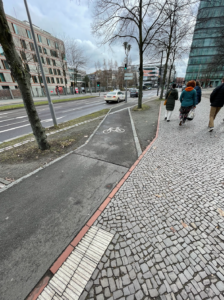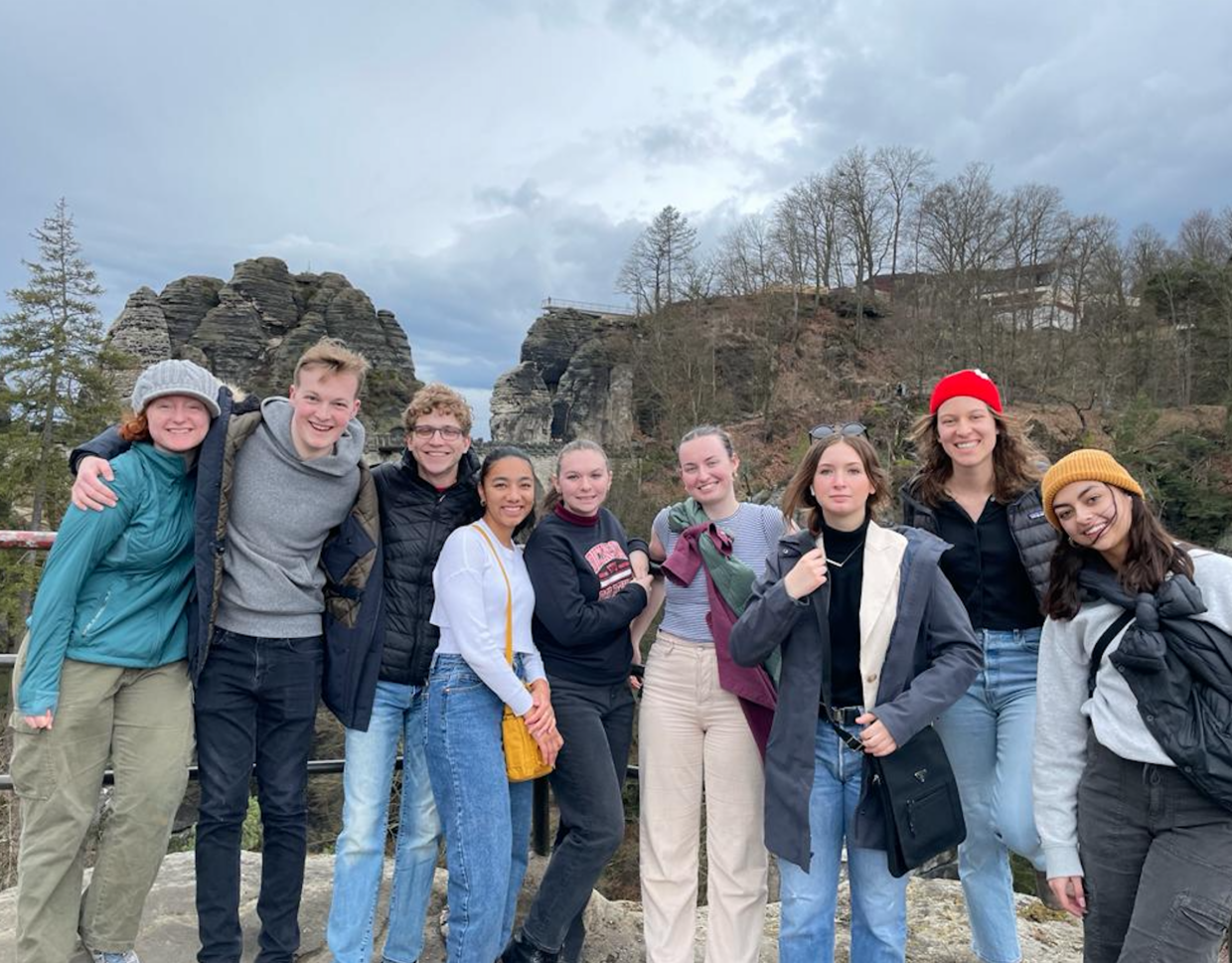Hi everyone, I am excited to share some insight from my surveying and my perspective of our trip to Germany. My surveys are on green spaces within Berlin specifically, and people's perceptions on them. Questions included thoughts on frequency of use, type of use, perceived benefits, safety, and aesthetics of Berlin's green spaces. I am really happy with the results I got from my surveys (n=5) because I got different answers than I expected, but answers that still support my thesis. My first survey respondent was a woman with a small child who I met in a children's park. She's lived in Berlin for 15 years and spends 1-2 hours a day in parks or other green spaces. She talked frequently about the effect on her happiness and depression that green spaces have, and that she would be horribly depressed without access to a green space on a consistent basis. Unfortunately, she noted that in the colder seasons, Berlin's green spaces aren't actually all that green, and the lack of color and greenery can make it difficult to bolster her mood like it normally would in warmer months. I could only agree. I had prepared to spend part of my trip in Germany going around to green spaces and photographing them for my project, but the lack of color made the spaces largely underwhelming and even sad to look at. While I know the benefits of green spaces still run through the winter, the aesthetic benefits certainly suffer. I put a question on my survey about safety in green spaces, not thinking that it would be a large topic in my surveys. The responses, however, were overwhelming. The first respondent said that she often feels unsafe in Berlin's green spaces and that many are overrun with dangerous people who harass her and her children and use drugs openly. She said that she has had to learn to just get up and leave at any point where she may feel uncomfortable or unsafe, as it is more dangerous for her in Berlin to talk back or try and defend herself. This was tough to hear but it seemed that she wanted this perspective to be heard and was happy that I gave her space to talk about it. Two other respondents, who were both teenage girls, cited feeling unsafe in Berlin's parks. One said in her survey that as soon as the sun is up, she goes home, entirely due to the fact that she feels unsafe after dark in any green space in the city. I surveyed two young teenage boys and they also cited safety concerns in green spaces, one saying he was unsure if he felt safe or not and the other saying he doesn't feel very safe. I was happy that all of my survey respondents cited that they visit green spaces multiple times a week and all found either a slight or very positive impact of green spaces on both their happiness and stress levels. I challenged myself a bit by surveying the two boys in German as they didn't understand English. They were doing parkour in the park when I approached them and provided an really unique perspective on the values of green spaces to young people in Germany.
It wasn't difficult to notice the start contrast in sustainable initiatives in Germany vs. the U.S. once we got to Germany, as it was all around us. I could see signs supporting climate initiatives on the street, public transit everywhere, and a very thoughtful and meticulous layout of city planning in each city focused on bike and pedestrians, then public transit, then cars. I was looking at my feet constantly in admiration of the various permeable pavements and zoning of bike lanes and walkways, taking photos where I could.

Grass through the tramway.

Clear and safe bike and walking lanes, and permeable pavers.
While many cities in the U.S. have began to adapt sustainable development strategies, there is nothing similar to what we saw in Germany. When it rained, the hydrology nerd inside of me looked for spots of water retention and poor drainage while walking around. German cities are far from perfect, but it was pretty astonishing the difference I saw in water retention during and after rainfall. Instead of noticing large puddles on the streets, I saw a low level of water sitting on a fully saturated ground of some type of permeable pavement. That meant that all the water that could possibly have drained below to the ground, did! I contrast, cities like Carlisle where we study have pretty horrific streetscapes that have massive puddles during rain events and enough impermeable pavement to keep that excess water from reaching the ground below.

Sign in Berlin that this park is a protected green space.

Yukti April 9, 2023
Dear Sophie,
Thank you for sharing your survey results and insights on green spaces in Berlin. It’s fascinating to hear how people’s perceptions of green spaces vary based on factors like the time of year and their personal experiences.
I was particularly struck by the overwhelming concern for safety in Berlin’s green spaces. It’s disheartening to hear that people don’t feel safe in these areas, especially since they are so important for mental health and well-being. It’s also interesting to hear the perspectives of young people on the value of green spaces, particularly the two boys you surveyed in German.
Your observations on sustainable development strategies in Germany are also eye-opening. It’s impressive to see how much emphasis is placed on sustainability and environmentally friendly practices in German cities. Here in the UAE, we do not have public spaces for cycling around the city as the weather and culture don’t allow for it. Also, the slightest of rains floods our roads. As someone who also pays attention to water retention and drainage, I can definitely appreciate your hydrology nerd moment while walking around German cities.
One question that came to mind while reading your post is: do you think there are any factors unique to Berlin or Germany that contribute to the perceived lack of safety in their green spaces, or is this a more widespread issue throughout cities in general?
Thank you again for sharing your experiences and insights.
Best regards,
Yukti Sajnani
Sara Alblooshi April 9, 2023
Dear Sophie,
Thank you for sharing your experience and your findings as a result of the thesis you were exploring. It is great to see that different insights were considered and rather different from what was expected.
From my understanding, your efforts were made to explore whether green spaces had an effect on the people of Berlin and whether based on aesthetics, safety, happiness, and many other aspects as well were considered from different individuals’ points of view. It was certainly interesting to hear about the sustainable development strategies that the country implements since I could relate to a few discussed.
While the UAE is a growing country that stemmed from initially the desert, implementing greenery all throughout cities is becoming quite important to establish a sense of home, familiarity, and comfort. Therefore, sustainable initiatives are well established and growing immensely especially with COP28 (United Nations Climate Change Conference) occurring in the UAE this year. While the UAE does not experience as heavy a rainfall as other countries, the country’s infrastructure cannot handle rain, so we are left with puddles during the rainy season.
Overall, do you think the US should implement much of what was seen in Berlin, especially with the water retention and drainage systems?